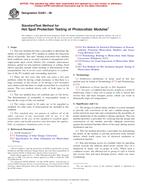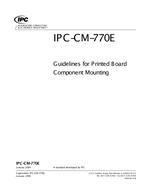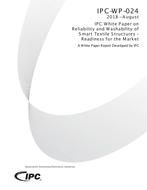ASTM E2481-08
$35.00
Standard Test Method for Hot Spot Protection Testing of Photovoltaic Modules
standard by ASTM International, 11/01/2008
Description
1.1 This test method provides a procedure to determine the ability of a photovoltaic (PV) module to endure the long-term effects of periodic “hot spot“ heating associated with common fault conditions such as severely cracked or mismatched cells, single-point open circuit failures (for example, interconnect failures), partial (or non-uniform) shadowing or soiling. Such effects typically include solder melting or deterioration of the encapsulation, but in severe cases could progress to combustion of the PV module and surrounding materials.
1.2 There are two ways that cells can cause a hot spot problem; either by having a high resistance so that there is a large resistance in the circuit, or by having a low resistance area (shunt) such that there is a high-current flow in a localized region. This test method selects cells of both types to be stressed.
1.3 This test method does not establish pass or fail levels. The determination of acceptable or unacceptable results is beyond the scope of this test method.
1.4 The values stated in SI units are to be regarded as standard. No other units of measurement are included in this standard.
1.5 This standard does not purport to address all of the safety concerns, if any, associated with its use. It is the responsibility of the user of this standard to establish appropriate safety and health practices and determine the applicability of regulatory limitations prior to use.
Product Details
- Published:
- 11/01/2008
- Number of Pages:
- 5
- File Size:
- 1 file , 220 KB
- Redline File Size:
- 2 files , 430 KB
- Note:
- This product is unavailable in Russia, Ukraine, Belarus





